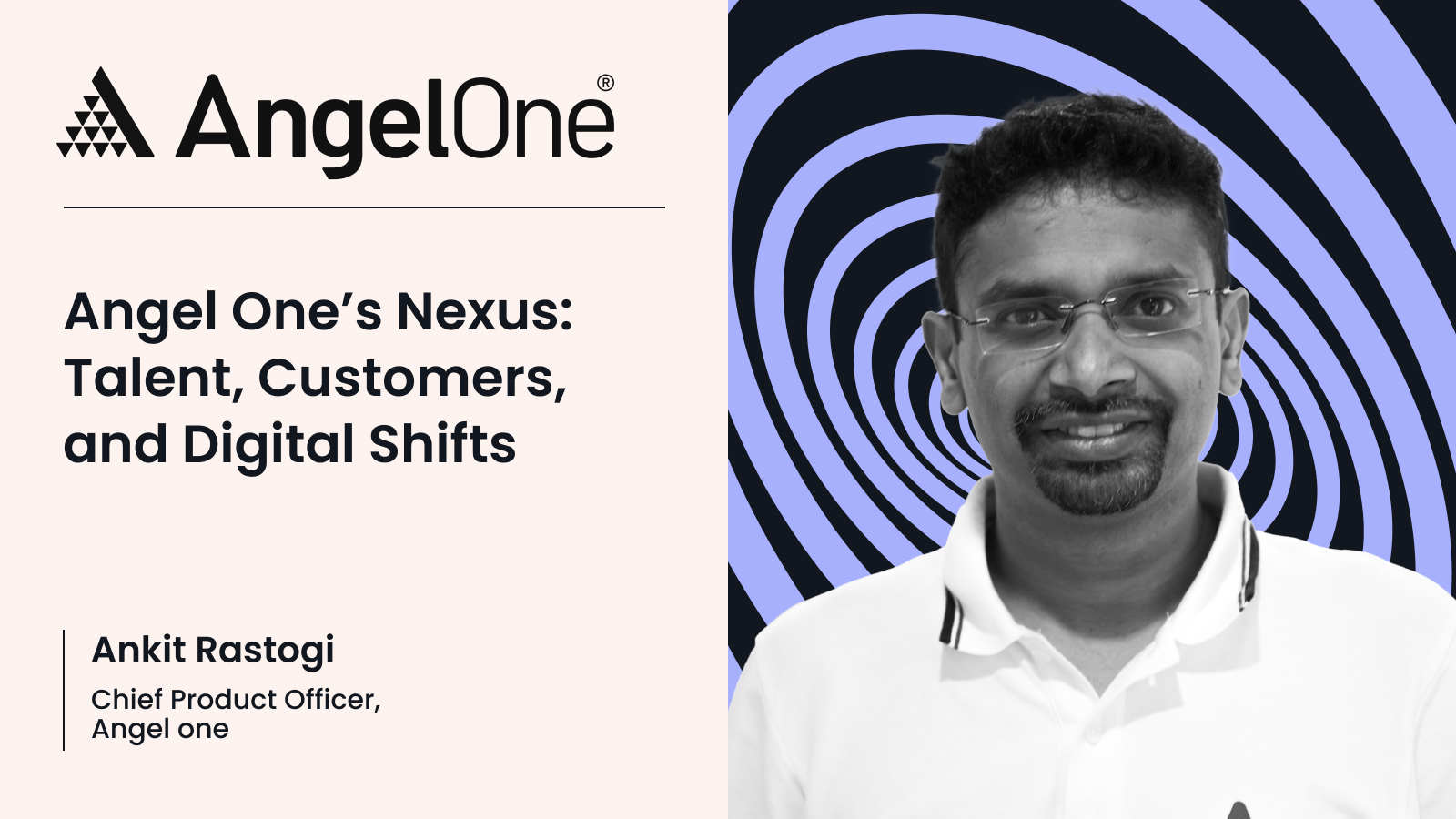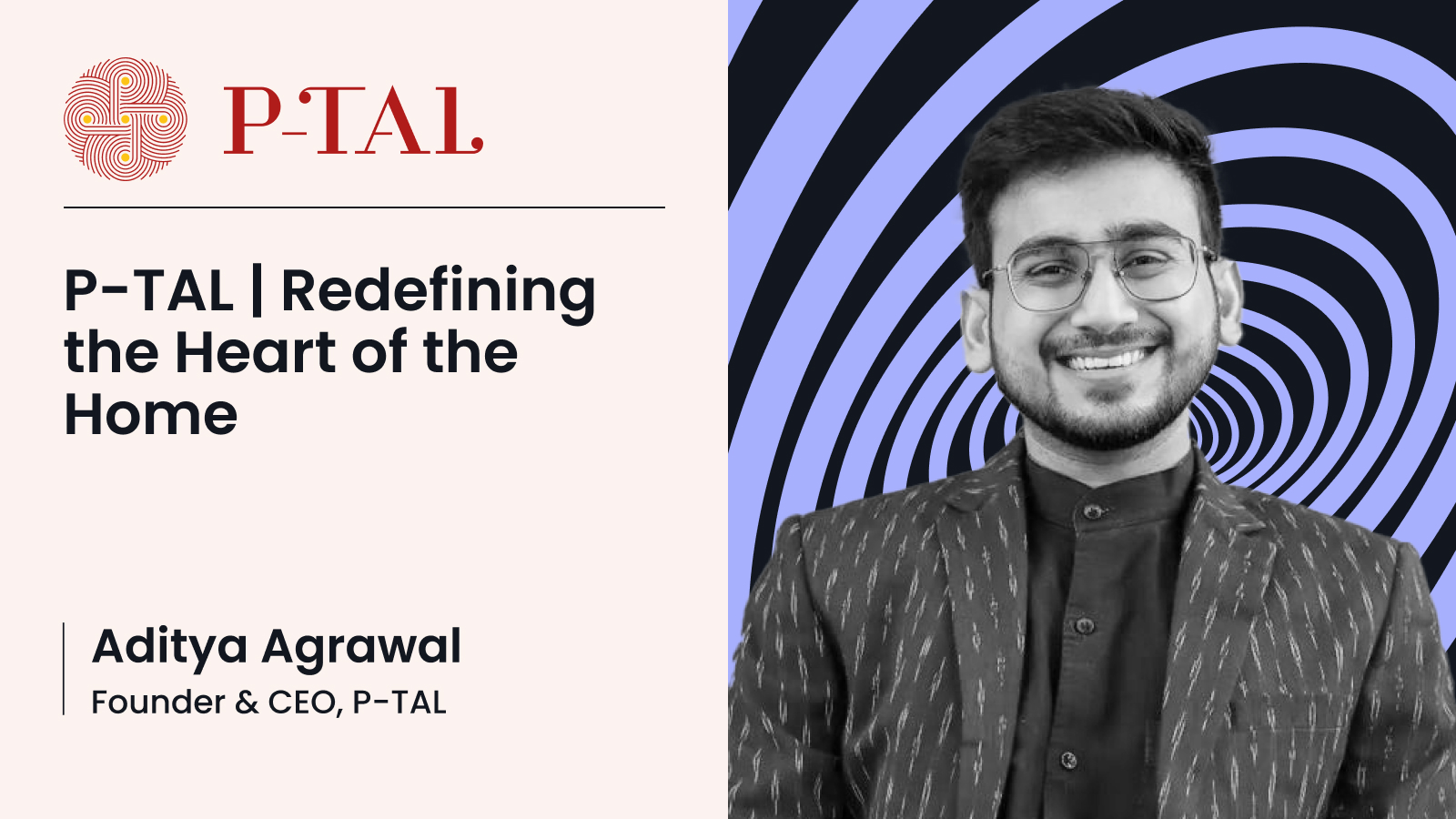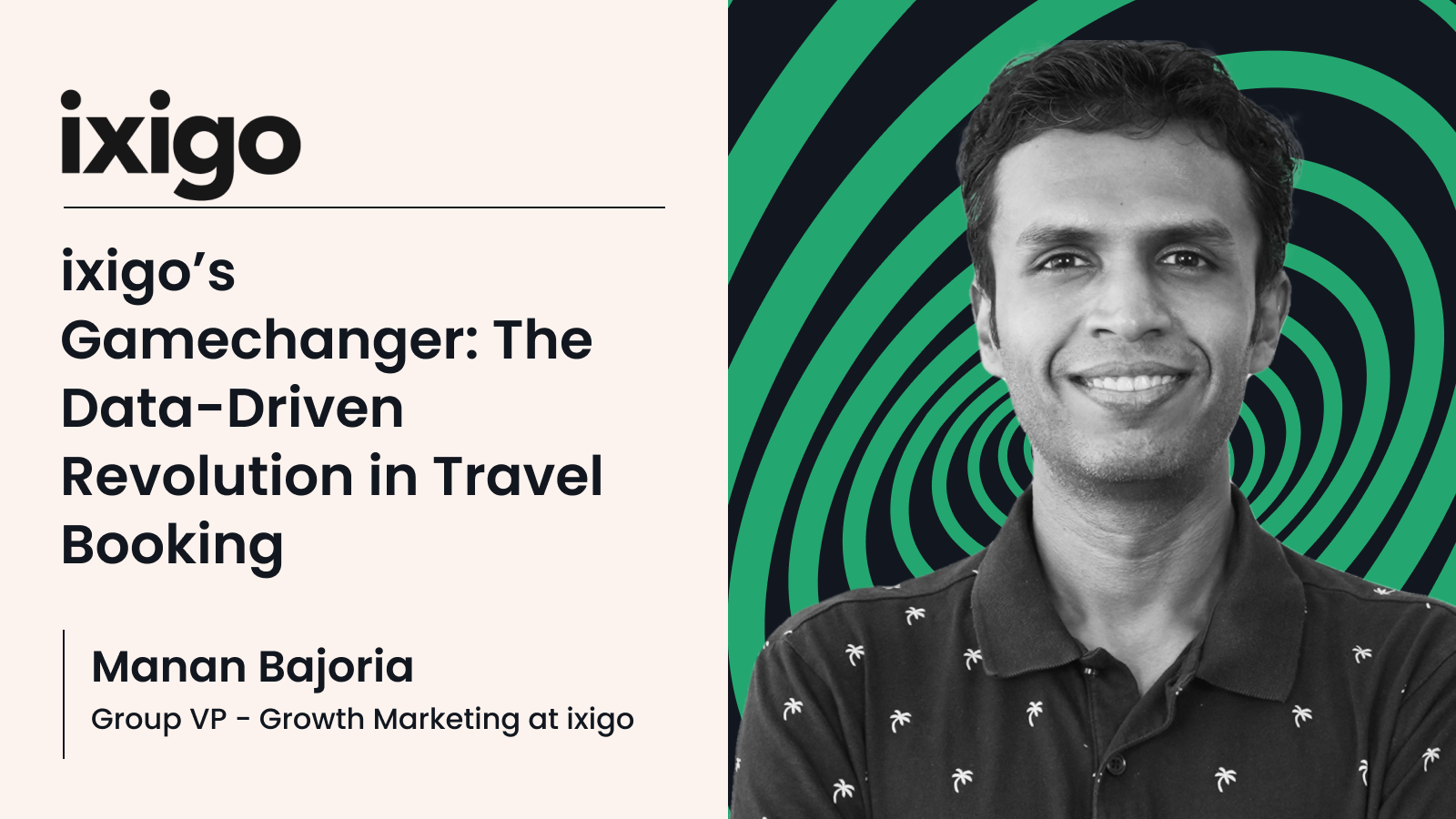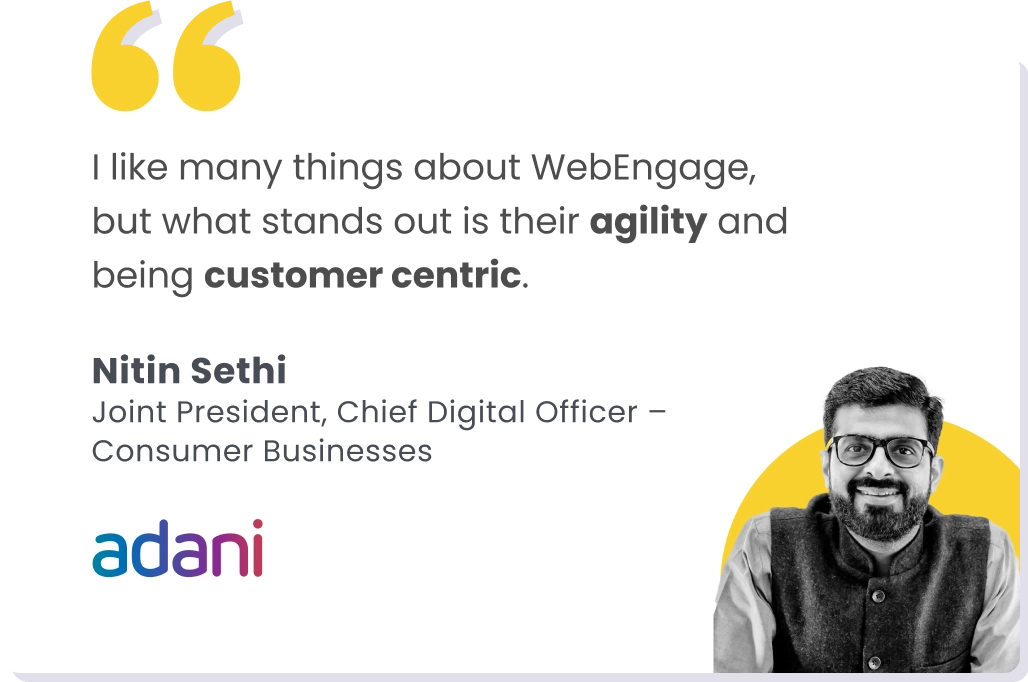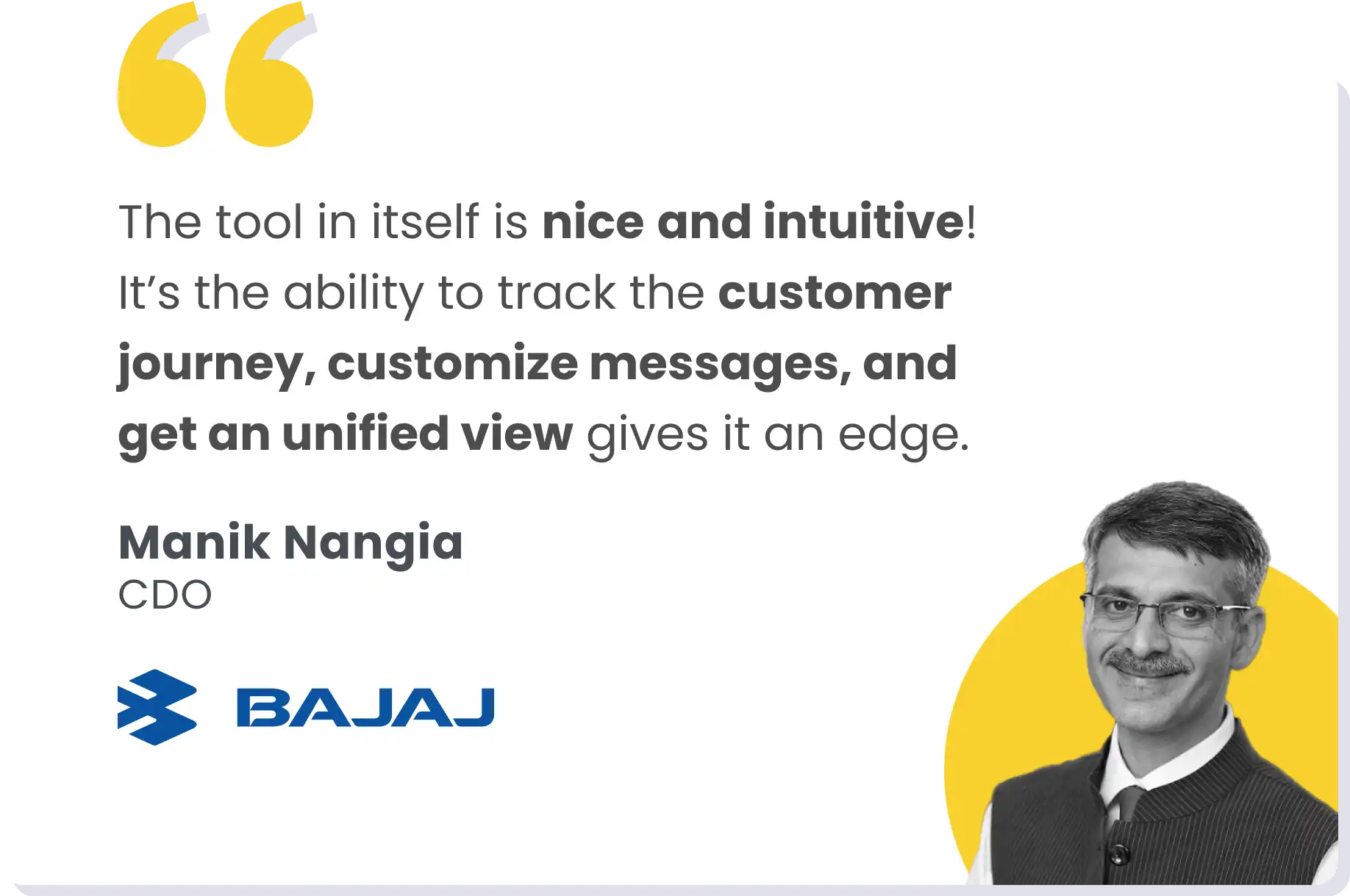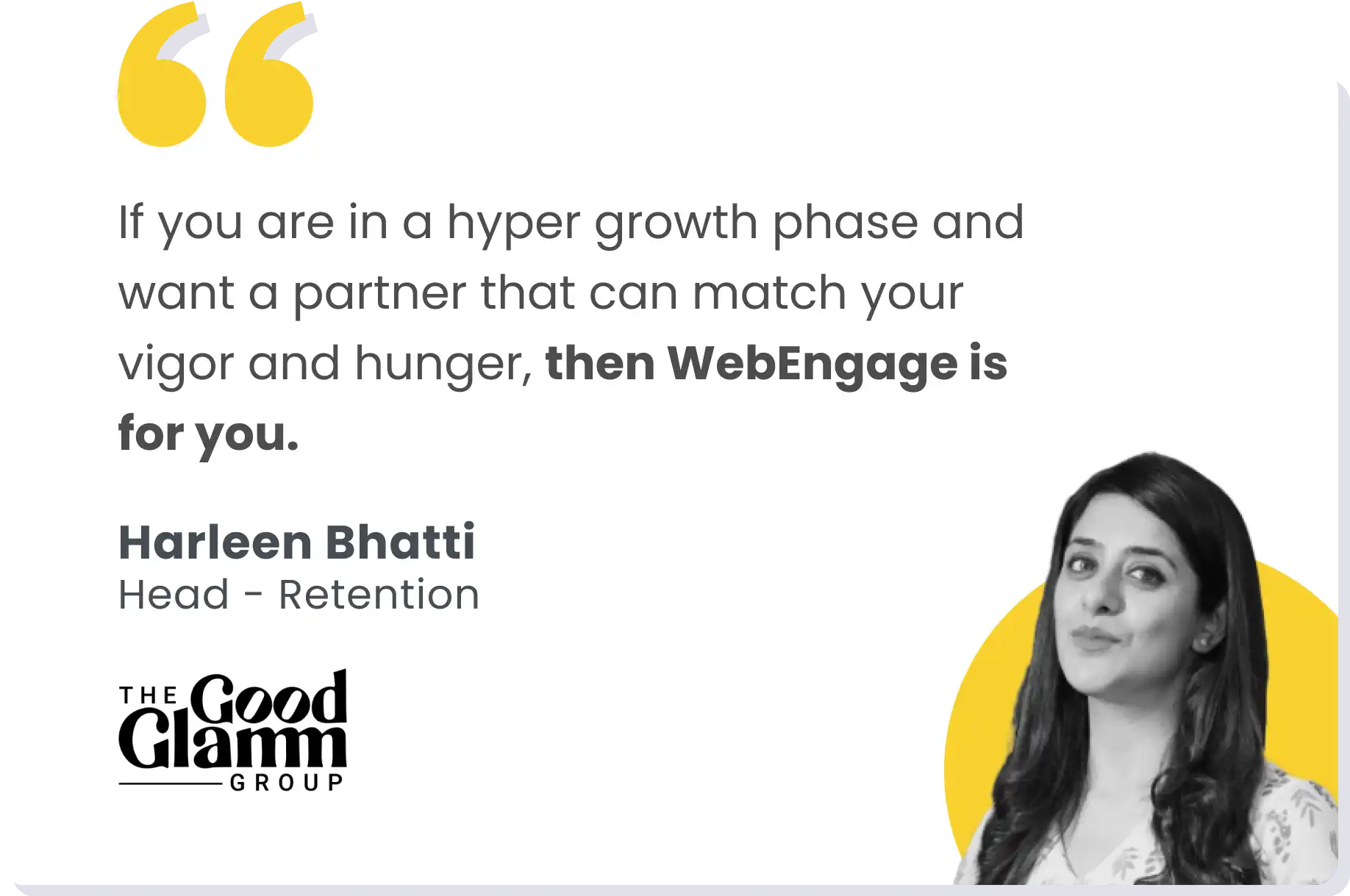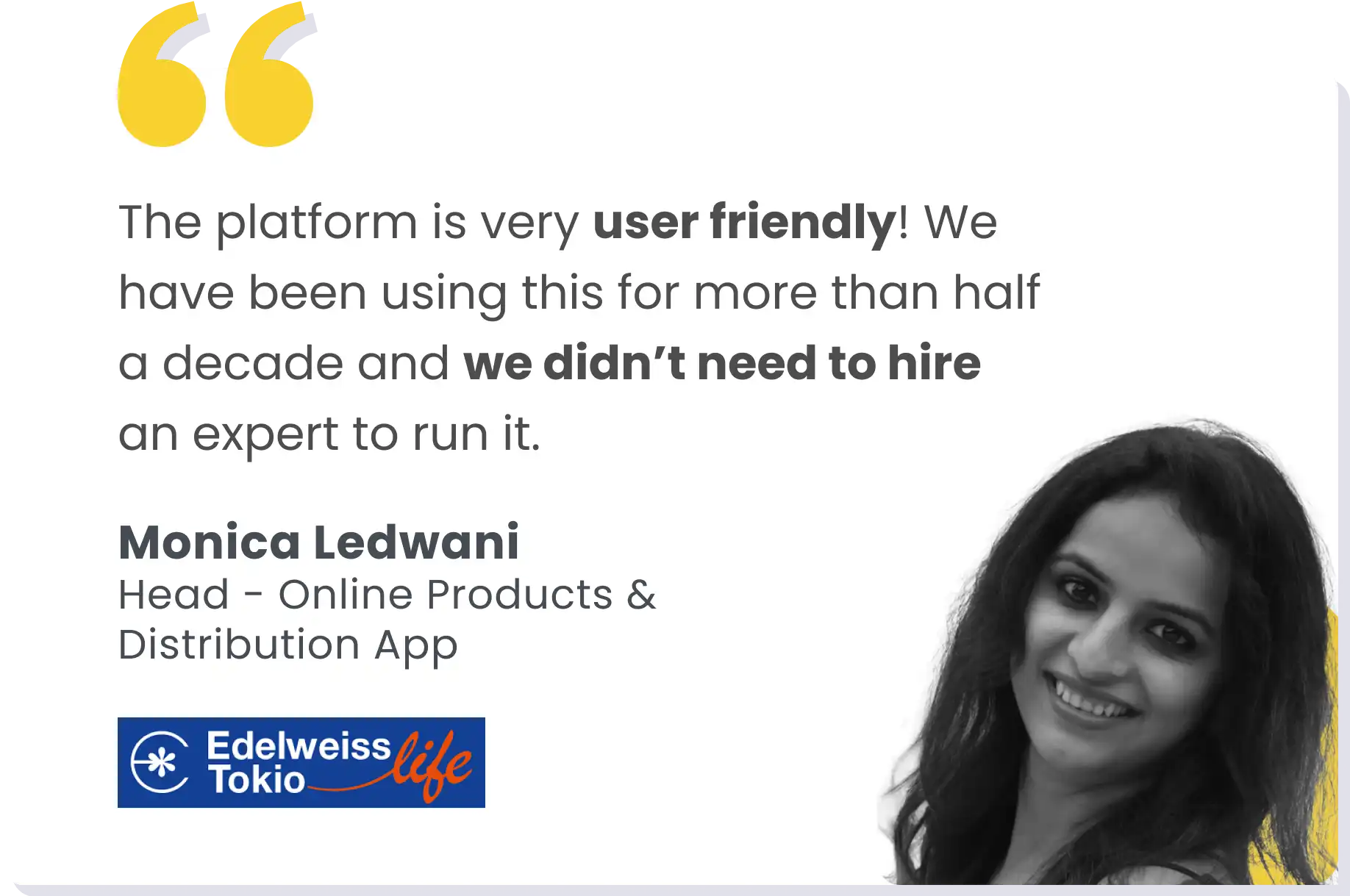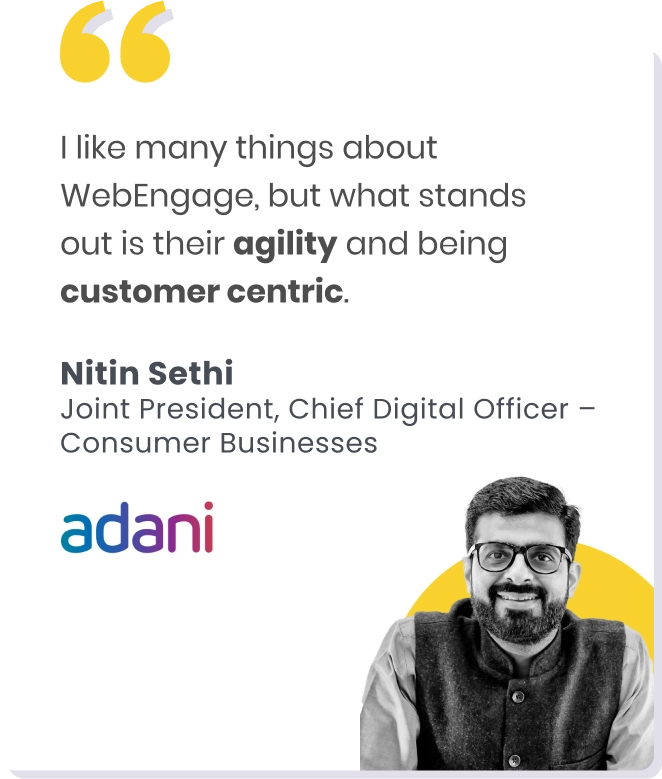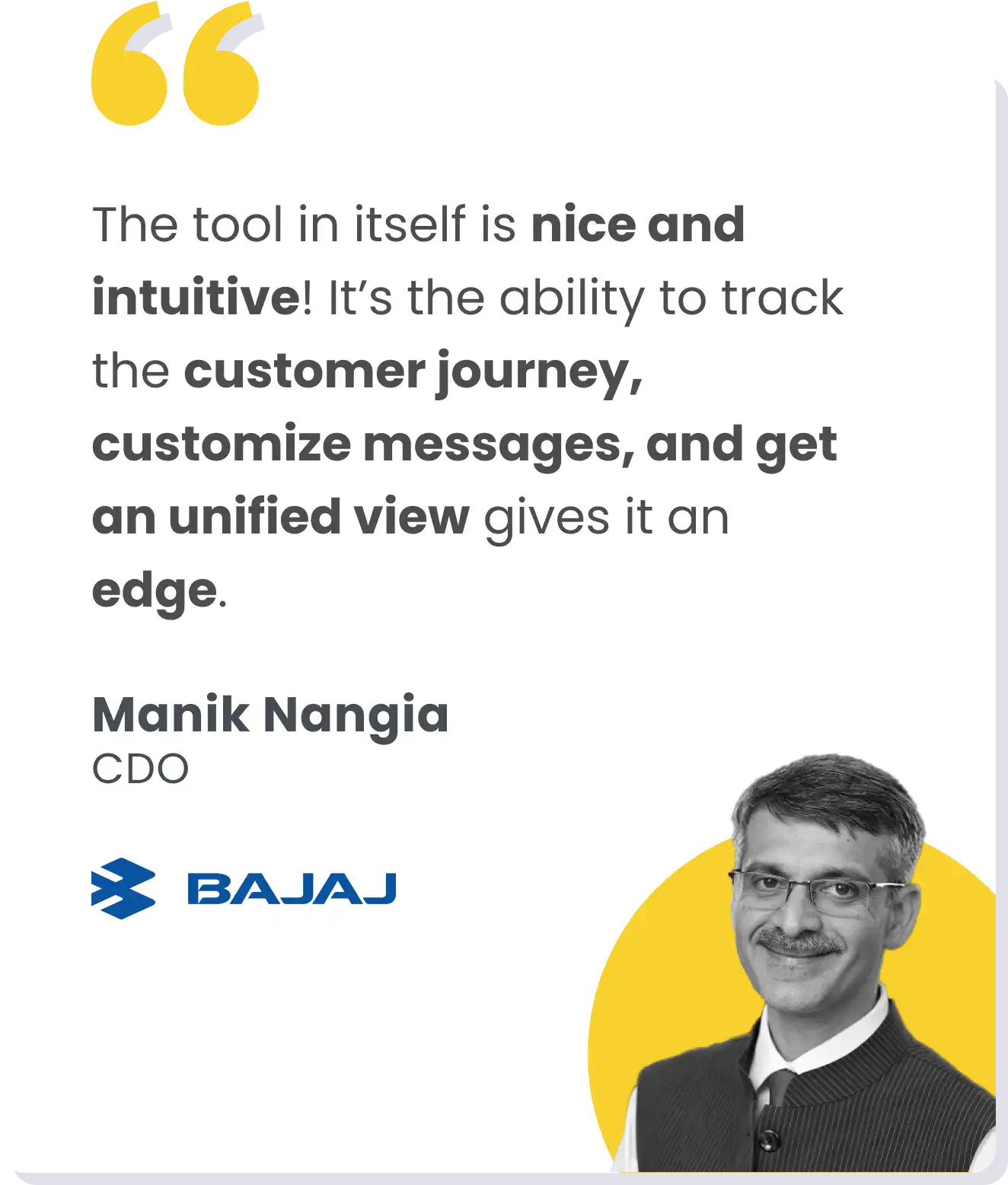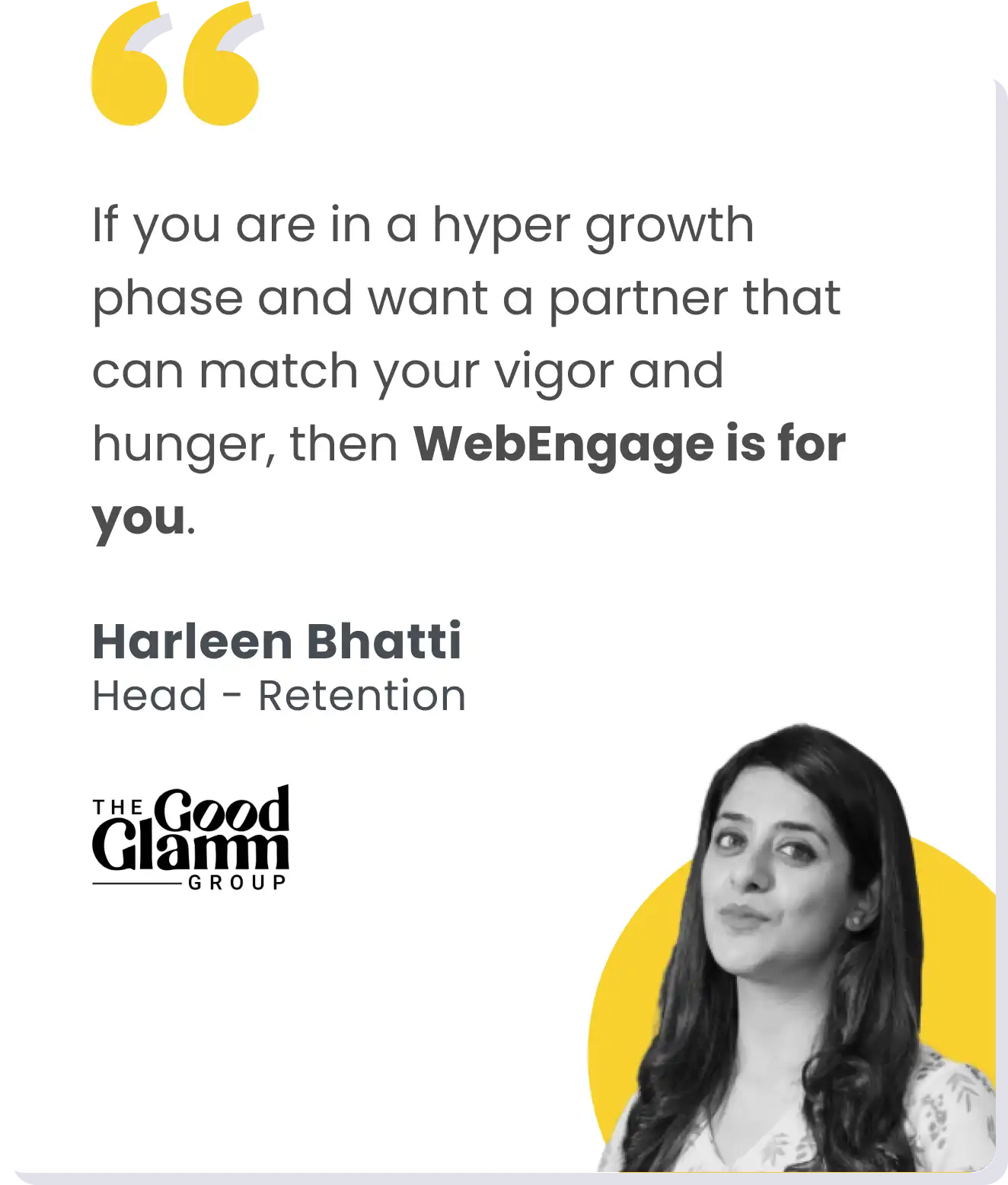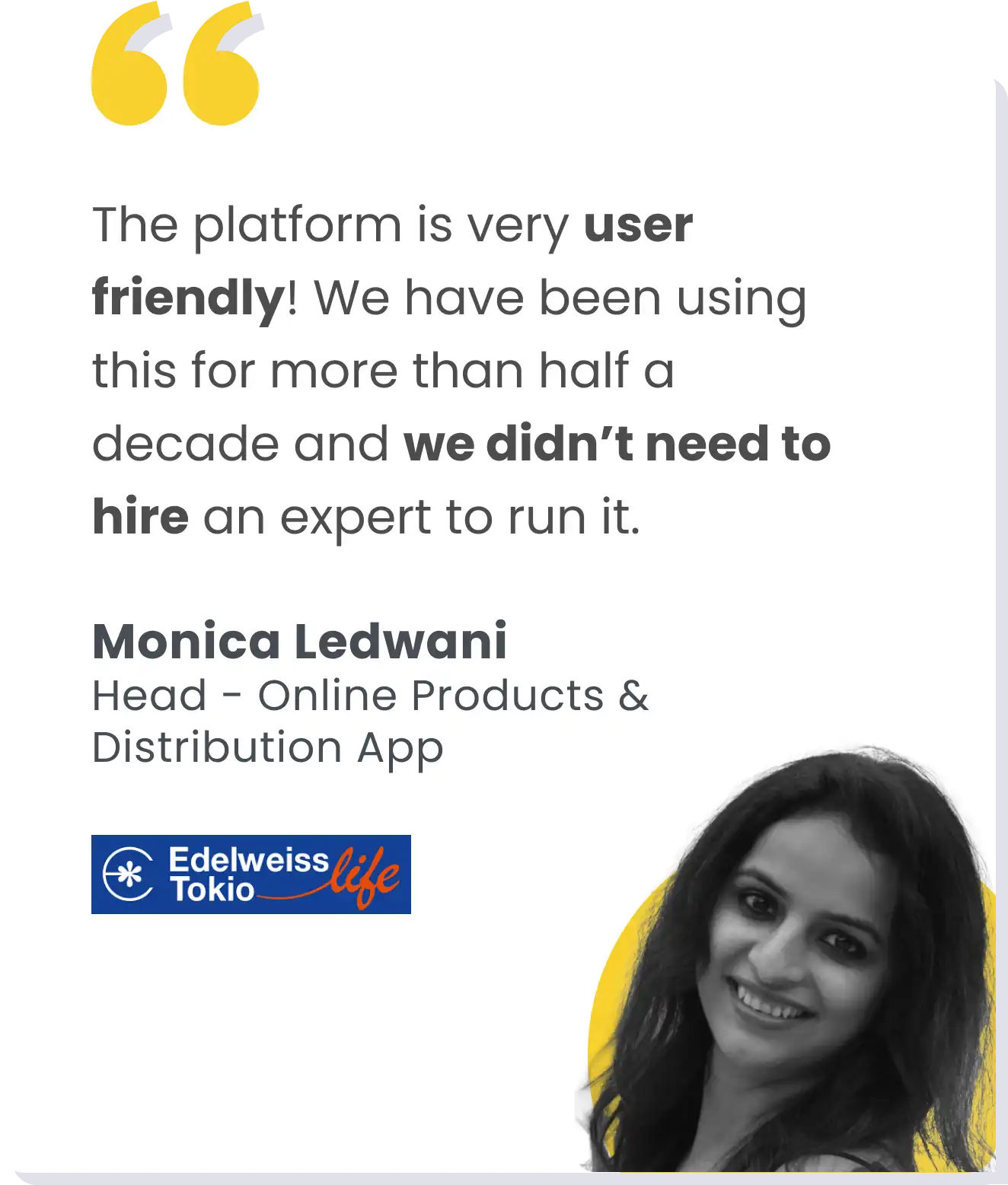WebEngage’s The State Of Retention Marketing Podcast is thrilled to bring you insider insights from some of the world’s veteran marketers in the user engagement and retention marketing industry.
Today, we present Ankit Bansal, Co-founder and General Manager of SellThru, a first-of-its-kind digital marketing agency based in Dubai, UAE. He has helped top brands scale up and is now building his own.
Here is how the conversation went.
Ankit started by introducing what his agency is about and discussed retention marketing and building his business in a new region.
“What an agency is about, in the true sense, isn’t just giving advice but going all out to execute the idea.”
There’s a big gap in knowledge and experience in the agency ecosystem. We’re a client-side agency pioneering CRM, Marketing Automation, and SEO solutions in the UAE and KSA region, bridging the gap between customers and partners.
Here is how we’ve stood out, hired the best hands, and increased ROI for our clients.
Exploring the Diversity and Expertise Across the Marketing Agency
When clients onboard our agency, the first significant barrier they want to cross is implementation; getting the proper implementation is usually not easy.
When you’re in a space, especially in customer engagement platforms where you have different attributions to track and multiple channels, you cannot replace experience and attitude.
In an agency setting, people are more likely to have allocated tasks.
I’ve worked with traditional performance agencies, focusing more on specialists. You may have a search specialist, a social specialist, or a performance marketer who can manage search and social.
This allocation can make responding to clients’ needs and concerns harder. Imagine reaching out to someone, and they reach out back with half-baked answers because they don’t understand the segment you’re asking about.
Here at SellThru, we have internal teams that handle different parts of the client’s business, working hand-in-hand with each other and keeping every team updated on what’s happening with every client.
One thing that differentiates us is that growth in the company is linked to the complimentary services you learn. To move up the ladder, you must learn a complimentary service matching your skills. For example, you can learn SEO if you’re a CRM person.
The diversity and experience we’re building as an agency ensure that we can provide a personalized experience for each client we work with and that the company’s talents have the opportunity to upskill at every stage of growth.
Evaluating Retention Maturity Across Companies in Different Regions
This will help us assess retention in the UAE and the Middle East. Unlike what we’re used to in the Eastern Market, it’s very app-heavy.
In the Western or Eastern markets where web experiences are comparable to app experiences, businesses — large conglomerates or small enterprises — show a common trend of relying significantly on mobile apps for most of their revenue, reaching up to 90% in Saudi Arabia.
This highlights the need for marketers to adapt strategies and communication channels accordingly to align with the app-centric nature of the region’s market.
There’s an intriguing scenario in the Saudi market where businesses may have a significant offline presence with numerous stores, yet their online presence, as reflected in their website, is subpar and lacks proper functionality.
For such businesses, there’s a substantial opportunity for improvement, emphasizing their potential to leverage the extensive offline data and customer base into a more robust and effective online presence.
Most common issues clients want to solve via martech from an agency lens:
- Go through a digital transformation,
- Use their first-party data,
- Create omnichannel experiences,
- Increase the purchase frequency of the business,
But they don’t know how.
However, there’s a growing awareness among businesses about the necessity of digital solutions, signaling maturity in understanding the importance of omnichannel marketing and data utilization leading to retention.
To solve their retention problem, there must be a certain level of User Experience (UX), User Journey, and Personalization. This will drive increased digital presence and prompt businesses to adapt swiftly to meeting consumer expectations in the Saudi Arabian market. It will give them a great experience both on the website and in-app.
For example, brands that have been in the ecosystem for years and are entering e-commerce without a great UX are at a disadvantage. As an agency, we are keen to explain that certain costs, like CAC, are tied to business profit, and when brands begin to lose money, it sounds like a justification for underperformance.
More brands are realizing that the digital or eCommerce market can not be profitable from day one. What is pioneering this change is that retention isn’t a marketing problem but a business problem, and companies need to start treating it like a Day 0 problem.
If your initial purchase from a brand results in receiving the wrong item or encountering issues, perhaps the refund process takes longer than anticipated, requiring multiple calls to the support team, and the overall first-time experience is compromised.
No marketing, PR, or communication can compensate for such negative experiences. This further strengthens the significance of ensuring a top-notch customer experience for better retention rates.
MarTech Investment: Stack Selection, Overpayment, and Underutilization
When selecting a MarTech stack, the responsibility for choosing and managing the stack should not solely rest on the marketer overseeing the campaign; there should be collaboration across the entire organization.
It ensures a comprehensive and integrated approach that considers the needs and contributions of different departments within the organization beyond just the marketing team.
Retention is now being treated as an independent function, not like product ownership or customer support ownership. It’s just like a separate central function. Although it’s still within marketing, it has the flexibility to look at different areas within the business outside of marketing.
“Martech, in my experience, has a problem of overpaying and underusing. A lot of businesses overpay for a lot of tools that are being used by multiple departments but have an overlap of information.”
Let’s look at some examples; if you look at customer engagement platforms, a well-stacked CDP compared to traditional CDPs is mostly underutilized. Most of these companies do not use the data from CDPs enough for their business because they don’t know what they need.
When choosing a CDP, you must look beyond just the problem statement someone pitched to you or fancy terminologies and find what the tool solves. This will help reduce the overall cost of creating a marketing stack.
Here are three common mistakes the companies make in choosing tools:
- Following a checklist, the tools should be chosen based on essential criteria to address specific problems effectively instead of this approach. It encourages thinking about how well a tool can solve individual problems rather than just meeting a checklist.
- Failure to understand that the ROI calculation arises from the shift in MarTech investment evaluation, where platforms are now measured against the returns they provide.
- Neglecting long-term considerations for essential brand features. For example, if you want to build an app, you must send push notifications. Prioritizing tools that address these needs over time is crucial for sustained effectiveness.
Elevating Business Impact: Transformative Tales from the Agency Trenches
There is a certain level of impact you have because you have a certain level of experience in that business. Finding how it matters, how to pitch to clients, and your pricing and positioning elevate your agency.
Using our agency as the focus here, what we offer clients is based on first establishing what they need and want to scale. Some of our clients want to measure CRM, some want to look through a specific attribution window, and some want UTMs. Measuring what areas we align with the client and the type of investment they are willing to take for their business helps us scale better.
For example, I’ve seen a lot of mature companies that only use push notifications and email as a channel. We can introduce a WhatsApp strategy to them if it’s in their budget and give recommendations as we perceive the business needs.
From the client’s perspective, if they hire us as an agency, we ensure our performance aligns with the metrics they want to track.
Just by implementing the basics, which includes making sure all the marketing automation across the funnel is in place, making sure more channels are part of each flow that’s going out, and setting up some automated flows, we have been able to ensure one of our client’s profit when up from 3% to about 25%.
This growth is also a result of building a solid team of people who can work with the right attitude and experience. Trying to build something new is always scary, and you can’t do it without the right people.
As one building my client-side agency in a new region, I plan to keep inspiring and changing the industry, ensuring retention is on the agenda.
There’s more wisdom on where this came from. If you want to dive deeper into everything we discussed, listen to the podcast on Spotify or YouTube and let us know your thoughts.





